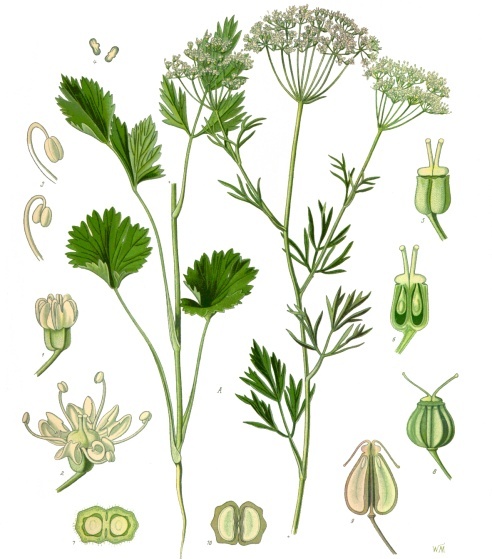carrot
Kingdom: Plants
Phylum: Angiosperm
classfication: dicots
order: appiales
species: carrot
Fom Late Latin carōta, from Greek καρότον karōton, originally from the Indo-European root ker- (horn), due to its horn-like shape) is a root vegetable,
The carrot gets its characteristic and bright orange colour from β-carotene
α and β-carotenes are partly metabolised into vitamin A in humans.
It has a crisp texture when fresh.
The most commonly eaten part of a carrot is a taproot
Companion plant


a carrot contains
| Vitamin A equiv. | 835 μg (104%) |
| - beta-carotene | 8285 μg (77%) |
| - lutein and zeaxanthin | 256 μg |
| Riboflavin (vit. B2) | 0.058 mg (5%) |
| Niacin (vit. B3) | 0.983 mg (7%) |
| Pantothenic acid (B5) | 0.273 mg (5%) |
| Vitamin B6 | 0.138 mg (11%) |
| Folate (vit. B9) | 19 μg (5%) |
| Vitamin C | 5.9 mg (7%) |
| Vitamin E | 0.66 mg (4%) |
| Calcium | 33 mg (3%) |
| Iron | 0.3 mg (2%) |
| Magnesium | 12 mg (3%) |
| Phosphorus | 35 mg (5%) |
| Sodium | 69 mg (5%) |
| Zinc 0.24 mg (3%) | |
| Fluoride | 3.2 µg |

www.mozaweb.hu/Lecke-Termeszetismeret-Termeszetismeret_5-A_sargarepa_es_a_petrezselyem-101551
Carrots can be stored for several months in the refrigerator or over winter in a moist, cool place. For long term storage, unwashed carrots can be placed in a bucket between layers of sand, or in soil. A temperature from 0 to 5°C is best.
quizlet.com/27683599/carrot-flash-cards/
Relatives:
celery
 We consume taproot, leaves and stem of the celery.
We consume taproot, leaves and stem of the celery.
 coin with a celery leaf, circa 515-470 BC.
coin with a celery leaf, circa 515-470 BC.
parsley

 We consume taproot, leaves and stem of the parsley.
We consume taproot, leaves and stem of the parsley.
anise
 Anise seeed is sweet and very aromatic flavor.
Anise seeed is sweet and very aromatic flavor. 
dill
 Dill oil is extracted from the leaves, stems and seeds of the plant. We use flowers, leaves, stems and seeds of dill.
Dill oil is extracted from the leaves, stems and seeds of the plant. We use flowers, leaves, stems and seeds of dill.
Hungarian folksong:
Sárgarépa, petrezselyem,
A vénasszony veszedelem.
Alig várom az ördögöt,
Hogy elvigye a vén dögöt!
Édesanyám rózsafája,
Én voltam a legszebb ága,
Legszebb ága, legszebb lánya,
A leányok bokrétája.
